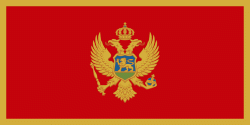Pljevlja Municipality (Pljevlja)
Pljevlja Municipality is located in northwestern region of Montenegro. It covers an area of 1,346 and had a population of 30,786 at the 2011 census.
The highest point of the municipality is on the Ljubišnja mountain at an altitude of 2238 m, while the lowest point is in the canyon of the Tara river with an altitude of 529 m above sea level. The municipality borders Žabljak Municipality, Bijelo Polje Municipality and Mojkovac Municipality in Montenegro, as well as the republics of Serbia and with Bosnia and Herzegovina. With a total area of 1346 km2, it is the third largest municipality in Montenegro.
The highest point of the municipality is on the Ljubišnja mountain at an altitude of 2238 m, while the lowest point is in the canyon of the Tara river with an altitude of 529 m above sea level. The municipality borders Žabljak Municipality, Bijelo Polje Municipality and Mojkovac Municipality in Montenegro, as well as the republics of Serbia and with Bosnia and Herzegovina. With a total area of 1346 km2, it is the third largest municipality in Montenegro.
Map - Pljevlja Municipality (Pljevlja)
Map
Country - Montenegro
 |
 |
| Flag of Montenegro | |
During the Early Medieval period, three principalities were located on the territory of modern-day Montenegro: Duklja, roughly corresponding to the southern half; Travunia, the west; and Rascia proper, the north. The Principality of Zeta emerged in the 14th and 15th centuries. From the late 14th century to the late 18th century, large parts of southern Montenegro were ruled by the Venetian Republic and incorporated into Venetian Albania. The name Montenegro was first used to refer to the country in the late 15th century. After falling under Ottoman Empire rule, Montenegro gained its semi-autonomy in 1696 under the rule of the House of Petrović-Njegoš, first as a theocracy and later as a secular principality. Montenegro's independence was recognised by the Great Powers at the Congress of Berlin in 1878. In 1910, the country became a kingdom.
Currency / Language
| ISO | Currency | Symbol | Significant figures |
|---|---|---|---|
| EUR | Euro | € | 2 |
| ISO | Language |
|---|---|
| SQ | Albanian language |
| BS | Bosnian language |
| HR | Croatian language |
| HU | Hungarian language |
| SR | Serbian language |
















